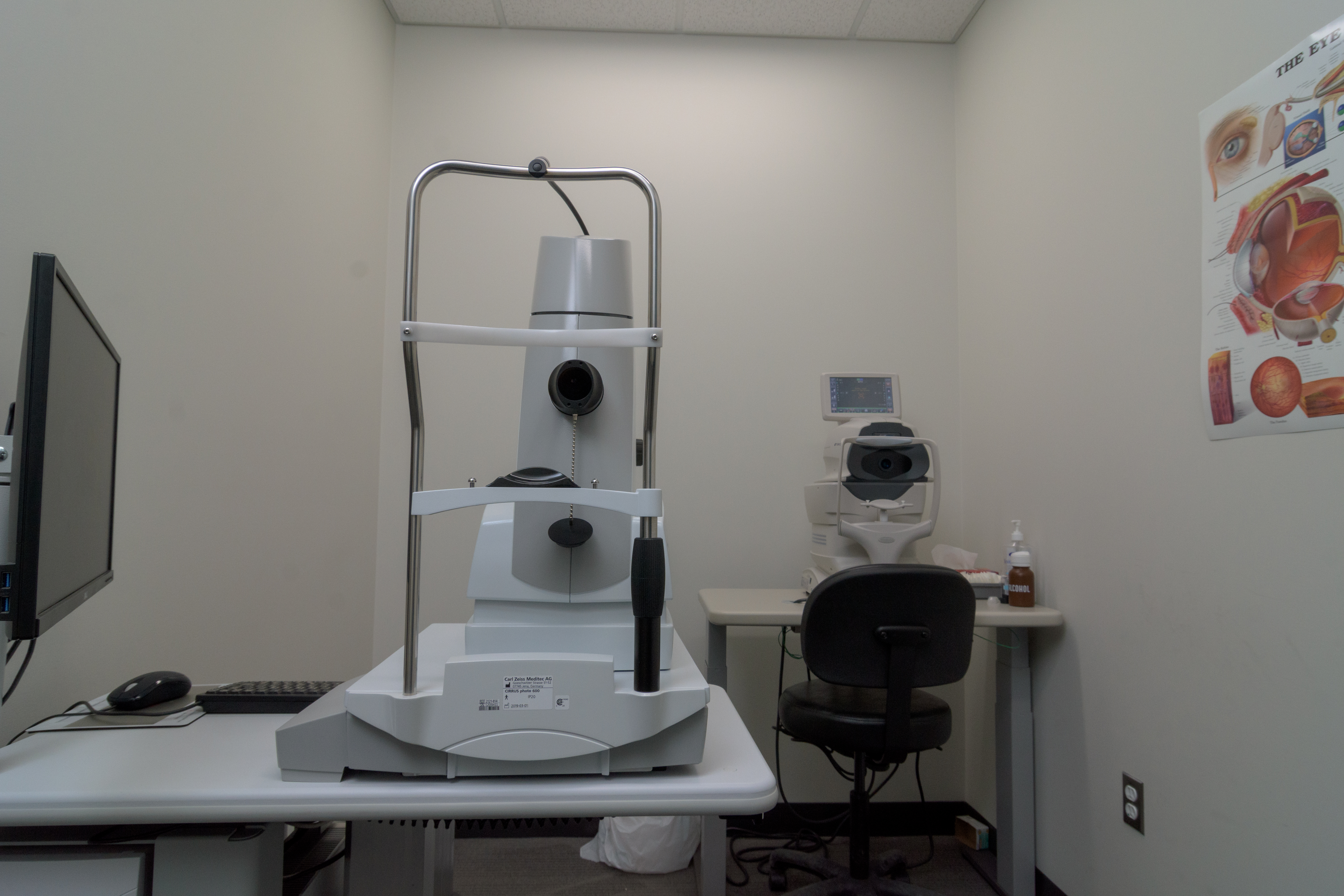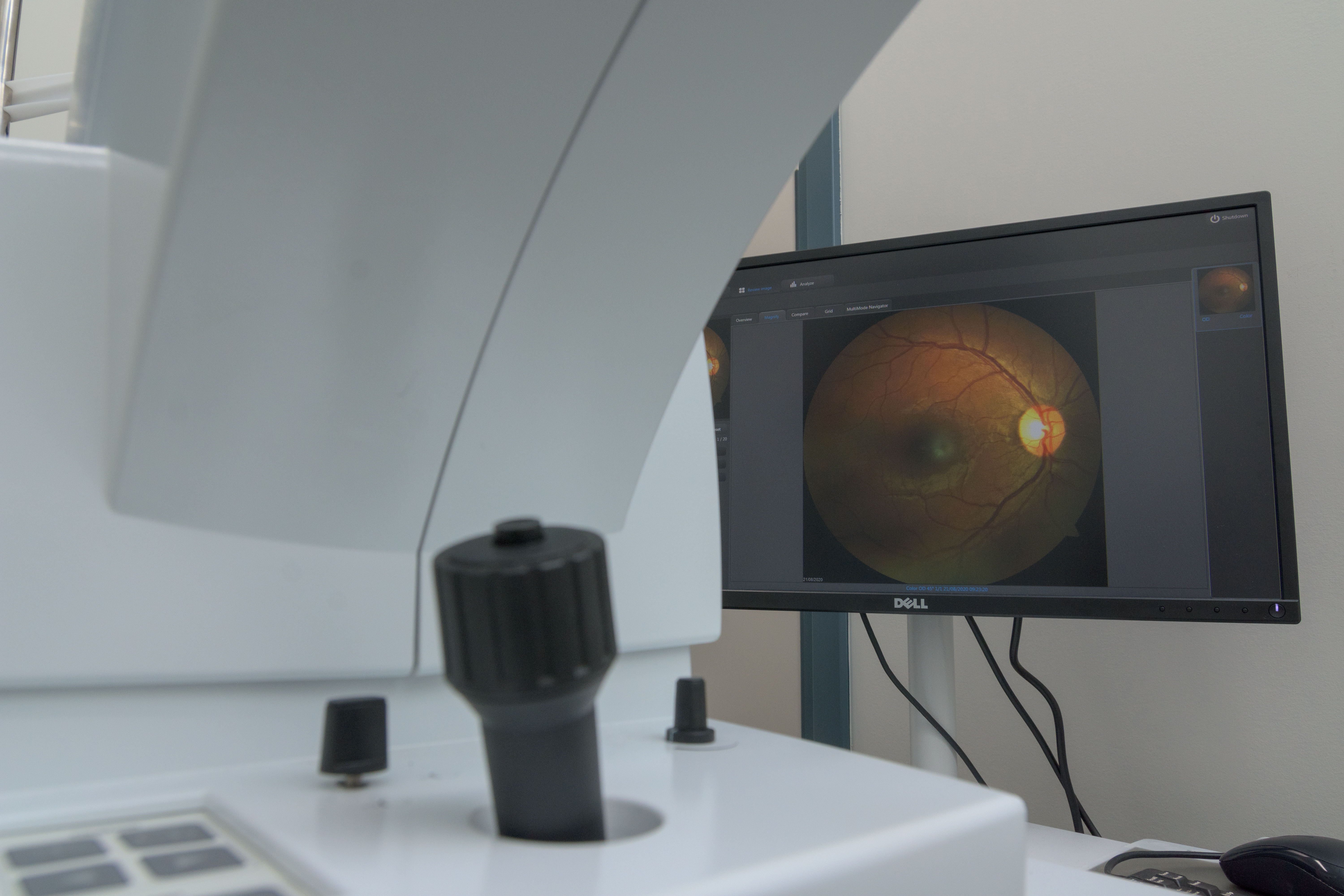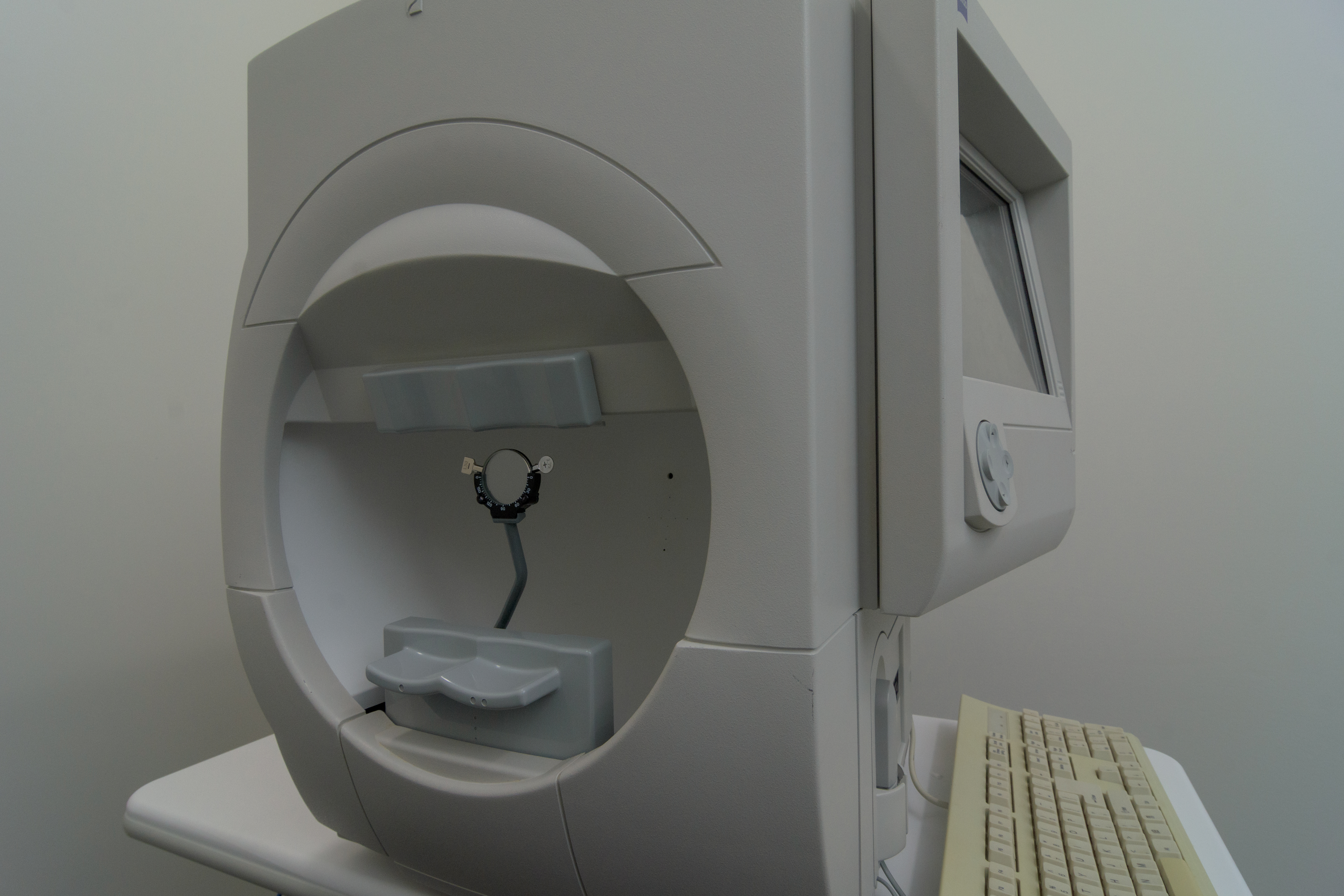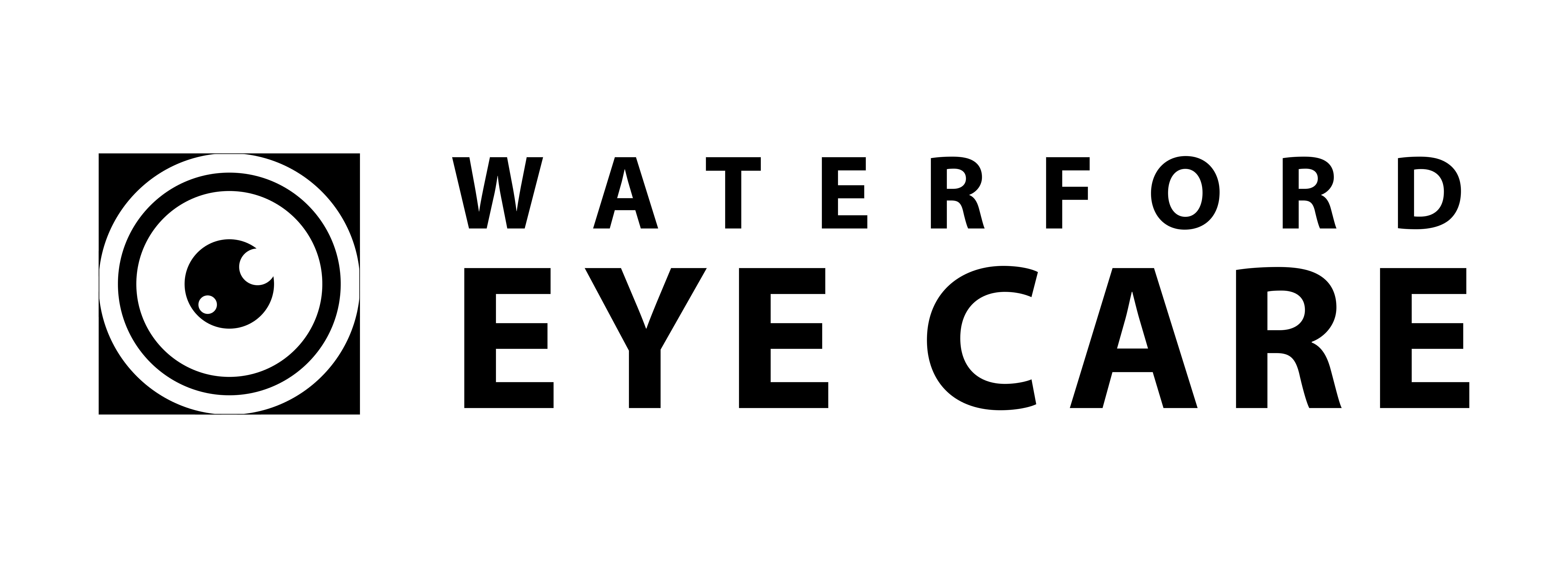Technology

PRETESTING:
Non-contact Tonometry (NCT): known as the “air puff” takes an eye pressure reading. Useful in screening/monitoring for glaucoma.
Autorefraction: An estimate of a patient’s spectacle prescription.
Keratometry: Measuring the curvature of the cornea (front of the eye). Useful for contact lens fitting and detecting irregularities with the front surface of the eye.
SPECIAL TESTING:

Optical Coherence Tomography (OCT)
A noninvasive imaging test that takes a scan of the back of the eye (retina). It takes a cross-section and shows the distinctive layers of the retina. By measuring and mapping out the thickness, we can diagnose certain eye diseases such as glaucoma, macular degeneration, detachments and diabetic eye diseases. This test is required for patients taking medications such as Plaquenil (hydroxychloroquine), tamoxifen, etc. as these medications can have ocular side effects.
Fundus photography:
A camera that takes a picture of the retina (back of the eye). It gives a visualization of the optic nerve, macula and blood vessels to help monitor for certain eye diseases. A good tool to have in order to educate patients on their eye health.
Humphrey Visual Field (HVF)
A test to detect changes in your central and peripheral vision. Conditions such as glaucoma, stroke, tumours and other optic nerve abnormalities can be detected and monitored. While looking at a central fixation (dot), a series of lights will flash around the central point. The test will take approximately 10-20 minutes and results will be reviewed by the optometrist afterwards.
Pachymetry: Measures the thickness of the cornea.
Colour Vision Testing: PIP/D15 Farnsworth available in clinic. Certain forms such as police, RCMP, occupational forms, fire/paramedic application forms require colour vision testing

